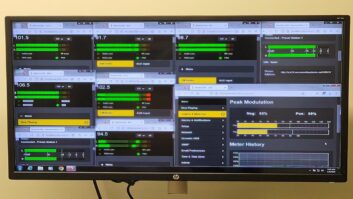NOAA and the U.S. Department of Homeland Security have signed an agreement that allows Homeland Security to send all-hazards alerts and warnings directly through the NOAA All-Hazards Network. The network supplements existing alert and warning resources and the capability serves as an additional delivery mechanism for sending life-saving information nationally, regionally or locally.
In addition, Homeland Security’s Federal Emergency Management Agency will continue to manage the Emergency Alert System.
“We feel strongly that the ability to put redundant systems and capabilities in place increases the likelihood that emergency information is delivered to targeted populations with minimal delay,” said Lt. Gen. Frank Libutti USMC (Ret.), undersecretary for information analysis and infrastructure protection, Department of Homeland Security.
Under this agreement, Homeland Security now has the authority to develop an alert and warning message that can be delivered directly to NOAA and broadcast to affected areas. The system can reach more than 97% of the United States territory on a 24/7 basis.
Radios and televisions currently equipped with SAME (Specific Area Message Encoding) allow listeners to pre-select the categories of alerts they wish to receive in chosen listening areas. Broadcast receivers are located in emergency operations centers and many public sites and workplaces. Public Schools in some states are similarly equipped.
In addition, the agreement provides that same message, distributed through NOAA, will be distributed locally or nationally over FEMA’s Emergency Alert System at the local level, which Americans regularly view as a crawl on the bottom of their television screens and is broadcast over local radio stations.
Beyond the new capability to broadcast Homeland Security Alerts and warnings coupled with protective measure information, the NOAA system will continue to broadcast weather forecasts and warnings, including news about severe storms, hurricanes, tornadoes, earthquakes and volcanic activity; chemical spills and bio-hazardous releases; and, in some states, Amber Alerts. Special populations, such as the disabled or the elderly, can connect NOAA All-Hazards radios via plug-ins to attention-getting devices, such as strobe lights, pagers, bed-shakers, personal computers and text printers.
Homeland Security Uses NOAA Network for Alerts, Warnings
Homeland Security Uses NOAA Network for Alerts, Warnings












